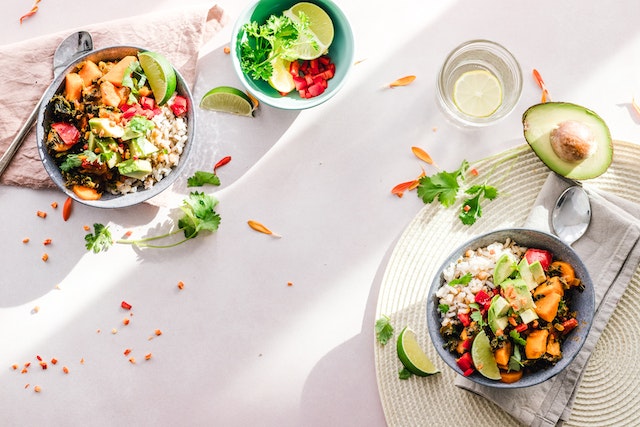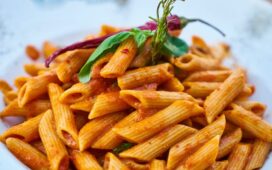Tired of diets that leave you hungry and unsatisfied? Examine your diet. Some healthful foods may hinder weight reduction. This post discusses diet-prohibited foods. We’ll cover high-calorie appetizers and sugary desserts! Grab a green tea and let’s start becoming healthier!
High-calorie foods
Counting calories helps you lose weight. Some healthful foods are high in calories. Chips and crackers are major causes. These have lots of empty calories and few nutrients.
Another food that can pack in calories quickly is sugary drinks like soda or sweetened iced tea. It’s easy to drink multiple servings without even realizing how many calories you’ve consumed.
Even seemingly healthy options like smoothies or granola bars can sometimes have a high-calorie count due to added sugars and fats. It’s always best to check the label and stick with whole, unprocessed foods as much as possible.
High-fat foods
Avoid high-fat foods to lose weight. Too much fat can cause weight gain, cholesterol troubles, and other health problems. Many processed foods like junk food and fast food are notorious for their high levels of unhealthy saturated fats. Fried foods, such as french fries or fried chicken, should also be avoided due to the large amounts of unhealthy fats they contain.
Full-fat dairy products like cheese and butter are also major culprits when it comes to high-fat content. While these may taste delicious, low-fat alternatives like skim milk or plant-based options can provide similar benefits without the added calories.
Meat lovers beware: red meat is typically higher in saturated fats than lean meats such as chicken or fish. However, if you must indulge in a steak dinner make sure it’s a lean cut with minimal visible fat.
While cutting out all sources of fat from your diet isn’t necessary (or healthy), being mindful of what types of fats you’re consuming can help you maintain a healthier lifestyle overall.
Foods that are high in sugar
When it comes to dieting, one of the biggest culprits that can derail your progress is sugar. Foods that are high in sugar can spike your blood glucose levels and leave you feeling lethargic, hungry, and craving more sugary treats.
Some examples of foods that are high in added sugars include candy bars, cookies, cakes, soda drinks, fruit juices, and sweetened yogurts. These sweet treats may taste great but they offer little to no nutritional value.
Additionally, many seemingly healthy foods like granola bars or flavored oatmeal packets also have large amounts of added sugars which add up quickly over time. It’s important to read nutrition labels carefully so you can avoid these hidden sources of sugar.
Instead of reaching for sugary snacks when hunger hits try opting for healthier alternatives such as fresh fruits or natural yogurt with a drizzle of honey on top. Not only will this keep your cravings at bay but it’ll also provide your body with essential nutrients to keep you full throughout the day.
Remember moderation is key when it comes to enjoying sweets!
High-sodium foods
Our bodies require sodium. Too much salt can cause high blood pressure and heart disease. Common sodium-rich foods Canned soups, chips, and deli meats are high in salt. Read labels before buying. Fast Food: Fast food establishments use lots of salt to add flavor. Fast food meals can exceed your daily salt intake. Ketchup, soy sauce, and salad dressings contain salt. Use fresh items to make low-sodium alternatives.
Cheese is not only high in fat but also tends to be high in sodium content.Bread Products: Bread products like bagels and muffins may contain more than 500 milligrams of sodium per serving. It’s important to keep an eye on your daily intake of sodium by reading nutrition labels carefully and choosing healthier options whenever possible.
Getting the right nutrition
It’s crucial to receive enough nutrients when following a diet. Ensure that Firstly, choose foods from each of the essential food groups – fruits, vegetables, grains, protein, and dairy. Each group provides different vitamins and minerals needed by the body.
Secondly, vary your choices within each food group. For example, instead of always having apples for fruit switch it up with berries or oranges.
Thirdly, read nutrition labels on packaged foods carefully to understand what nutrients they contain and in what quantities.
Fourthly, consider taking supplements if your diet lacks certain nutrients such as Vitamin D or Iron but consult with a healthcare professional before doing so.
Lastly and most importantly listen to your body; eat when hungry and stop when full. e 3 day diet plan will help prevent overeating which could lead to weight gain or nutrient deficiencies in some cases.
3-day diet plan benefits
Avoiding the foods mentioned and adopting a balanced diet will help you lose weight while getting all the nutrients you need. The 3 day diet, which incorporates a tight meal plan for three days followed by four days of typical eating, is popular. This diet can kickstart weight loss and improve diet.
Always incorporate fruits, vegetables, lean proteins, whole grains, and healthy fats in your meal plan. Drinking water throughout the day is also crucial. Before starting a new nutritional program or making major dietary adjustments, visit a healthcare expert. Everyone’s dietary demands are different. By eating mindfully and following a nutritious meal plan personalized to your needs, you’ll lose weight and feel better.



